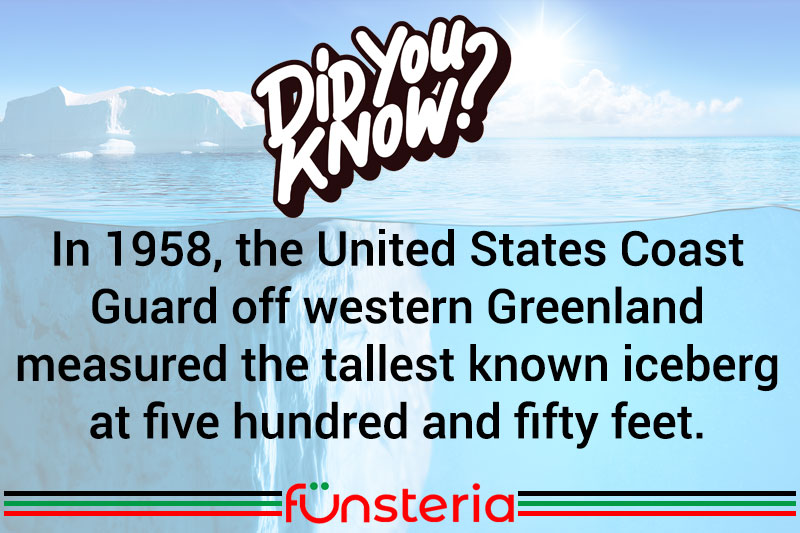
Perhaps if his explanation had been more detailed, the Titanic would still be afloat. But despite Mikhail Lomonosov’s 1760 treatise on the formation of those massive floating ice cubes, by 1912, they still represented a largely misunderstood phenomenon.
But thanks to modern fascination with the cold hard facts about ice formation, we now know as much as is possible about the life of an iceberg, from how they form, to how old they are.
Unless you travel the longitudinal length of the Earth, few people are aware that icebergs come in different shapes. Basically they are either tabular, or peaked and craggy, despite the fact that they all started life the same way. Icebergs are the result of glacier ice formation. As centuries passed and more layers of ice formed on top of the tables, the lowers levels became packed tighter and more solid. Eventually the glaciers slid, fell or were shoved off the edges of the land where they were formed so that the ice hung over the water, and sections would break off, a process known as calving.
Because it is so cold in the region of the Antarctic, icebergs tend to keep their tabular shape. But in the North Atlantic where there is a variety of currents and varying temperatures, water from the ocean’s surface would crystallize and freeze on top of the tables, scrunching up into jagged mountains as they expanded and solidified.
This resulted in the sharp points that we see drifting above the water, which typically, is sometimes as little as 10% of the iceberg’s real height. Because ice is not quite as dense as water, it “floats” to a certain degree, but being as large and heavy as they are, not much stays above the surface.
To date, the tallest above water section of an iceberg is one measured by the U.S. Coastguard off the coast of Greenland in 1958. It was 550 feet tall, which for reference, is only about five feet shorter than the Washington monument. Perhaps if his explanation had been more detailed, the Titanic would still be afloat. But despite Mikhail Lomonosov’s 1760 treatise on the formation of those massive floating ice cubes, by 1912, they still represented a largely misunderstood phenomenon.
But thanks to modern fascination with the cold hard facts about ice formation, we now know as much as is possible about the life of an iceberg, from how they form, to how old they are.
Unless you travel the longitudinal length of the Earth, few people are aware that icebergs come in different shapes. Basically they are either tabular, or peaked and craggy, despite the fact that they all started life the same way. Icebergs are the result of glacier ice formation. As centuries passed and more layers of ice formed on top of the tables, the lowers levels became packed tighter and more solid. Eventually the glaciers slid, fell or were shoved off the edges of the land where they were formed so that the ice hung over the water, and sections would break off, a process known as calving.
Because it is so cold in the region of the Antarctic, icebergs tend to keep their tabular shape. But in the North Atlantic where there is a variety of currents and varying temperatures, water from the ocean’s surface would crystallize and freeze on top of the tables, scrunching up into jagged mountains as they expanded and solidified.
This resulted in the sharp points that we see drifting above the water, which typically, is sometimes as little as 10% of the iceberg’s real height. Because ice is not quite as dense as water, it “floats” to a certain degree, but being as large and heavy as they are, not much stays above the surface.
To date, the tallest above water section of an iceberg is one measured by the U.S. Coastguard off the coast of Greenland in 1958. It was 550 feet tall, which for reference, is only about five feet shorter than the Washington monument.



